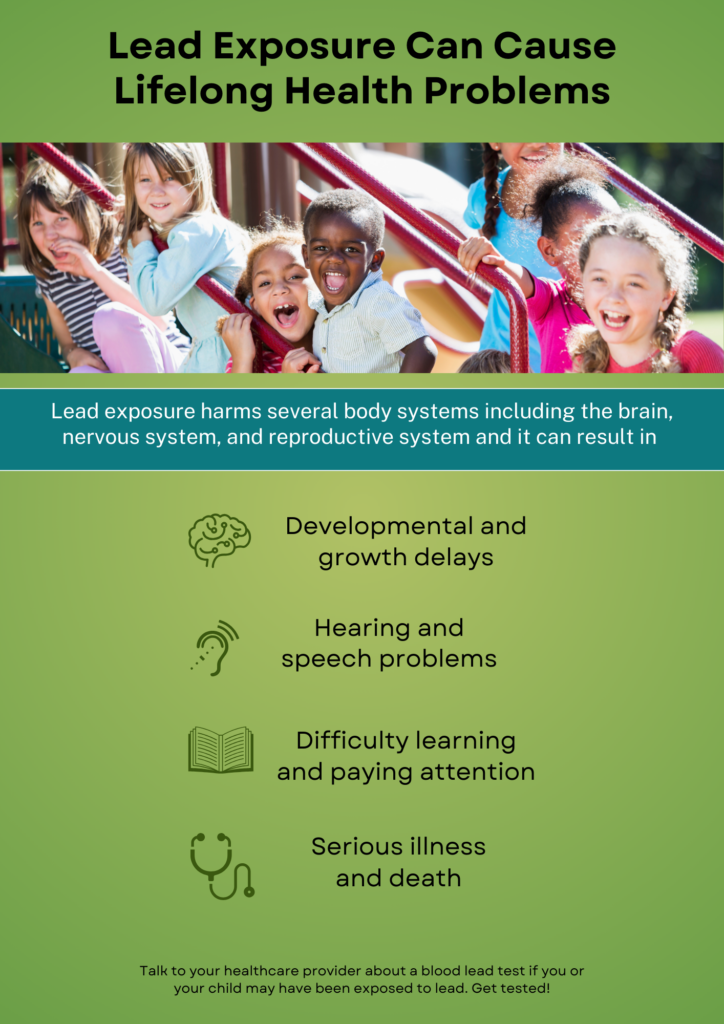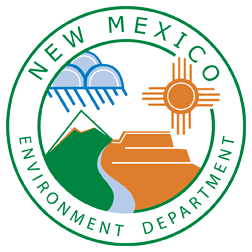The New Mexico Lead in Schools and Childcare Facilities Drinking Water (LWSC) Program is a free, statewide initiative to reduce lead exposure where children are cared for. Public schools and licensed childcare facilities are eligible to participate in this program which provides free sampling and laboratory testing to identify lead in drinking water.
For schools and childcare facilities on Tribal lands, EPA offers direct grants to Tribes. Click here for more information.
Learn how to remove and reduce lead exposure in your school through NMED’s LWSC Program
LWSC Program General Information
Learn how to remove and reduce lead exposure in your school:
Frequently Asked Questions
Are schools and childcare facilities required to test for lead in drinking water?
There are no federal regulations that require testing of drinking water in schools and childcare facilities, except for those that are their own public water systems and are therefore subject to comply with the National Primary Drinking Water Regulations (NPDWR).
According to EPA’s Lead and Copper Rule Improvements, community water systems are required to conduct public education and lead monitoring at schools and childcare facilities they serve. Those that are eligible to be sampled for lead according to these criteria can request assistance from their community water system.
All Public schools and licensed childcare facilities in New Mexico are eligible to participate in the New Mexico Environment Department’s free Lead in Schools and Childcare Facilities Drinking Water Program.
Should facilities flush lines before sampling?
Generally, facilities should not flush lines before a sampling event; however, there are some circumstance when flushing may be appropriate such as after holidays, winter and summer vacation, or the weekend.
Flushing before a sampling event can be used to ensure that the most accurate representation of typical water use is recorded. Water that is sitting in plumbing for too long can give inaccurate results. Consult with your sampling representative to create a plan before a sampling event.
Further information is located under the “Enrolled Facility Resources” button on the LWSC main page.
Where will samples be collected?
Samples for 3Ts will be collected at locations used for drinking water or consumption. This includes drinking fountains, kitchen and classroom sinks, sinks used to fill coffee pots or for cooking and washing dishes, and ice machines.
Non-potable sites such as mop bucket sinks, utility sinks, outdoor hoses, or eye wash stations are not typically sampled. If there is potential that these sites may be used (e.g., the outdoor hoses are used to fill water jugs for sports activities), schools should use clear signage to notify people that the faucet should not be used for drinking or cooking. If they are known to be used for drinking water, they should be included in the site sampling plan.
An NMED contractor will sample appropriate sites at your location as determined during the initial inventory with your sampling representative.
Who will collect samples?
An NMED contractor will handle your outlet inventory, all sample collections, and will report results to you once they are received, unless you opt to have staff trained to conduct these tasks.
Once you have been contacted by a representative, NMED’s contractor will schedule an appropriate time to complete the initial inventory and the subsequent sampling events (some facilities may require additional sampling based on initial test results).
When will samples be collected?
Sampling events will be conducted early in the morning before staff and students arrive. Be sure to avoid using any plumbing in the building before a sampling event.
Typically sampling events will not be conducted after holidays, breaks, or weekends. However, if your sampling event does fall on a day after one of these occasions, you may be asked to conduct flushing before the event.
How often should facilities have their water tested for lead?
How frequently your facility can and should test for lead in drinking water depends on a variety of factors (e.g., plumbing, water quality, lead results, budget, and competing priorities).
3Ts does not recommend a set frequency for sampling schools and childcare facilities, but does note that annual monitoring provides information regarding changes in the lead levels and the effectiveness of remediation or treatment efforts, as well as timely notice of lead levels that need to be addressed.
Regardless of the frequency set by your facility, EPA recommends that the sampling frequency be documented, and that schools and childcare facilities make testing drinking water a part of their regular building operations.
Program Overview and Benefits
Program Overview
The Lead in Schools and Childcare Facilities Drinking Water (LWSC) Program is a voluntary program started by the New Mexico Environment Department (NMED) using guidance from Environmental Protection Agency (EPA)’s 3Ts for Reducing Lead in Drinking Water (3Ts) program. The 3Ts program aims to assist schools and childcare facilities in the removal of lead from drinking water.
How frequently your facility can and should test for lead in drinking water depends on a variety of factors (e.g., plumbing, water quality, lead results, budget, and competing priorities). 3Ts does not recommend a set frequency for sampling schools and childcare facilities, but does note that annual monitoring provides information regarding changes in the lead levels and the effectiveness of remediation or treatment efforts as well as timely notice of lead levels that need to be addressed.
Regardless of the frequency set by your facility, EPA recommends that the sampling frequency be documented, and that schools and childcare facilities make testing drinking water a part of their regular building operations.
Program Benefits
- Free Sampling and Testing: All sampling materials and testing of samples by an accredited lab are provided through NMED and partner agencies.
- Remediation Planning and Implementation: If lead is found, NMED will assist the facility in creating and implementing a remediation plan appropriate for the facility.
- Monetary Assistance: NMED offers monetary assistance to qualifying facilities to cover costs associated with addressing lead issues identified through the LWSC program.
NMED LWSC Program Process
Program Quality Assurance Project Plan
STEP 1: APPLY
The process begins with an application to the program. Once your application has been accepted, you will be contacted for further information, such as facility maps and plumbing plans. You can get started by with the “Enrolled Facility Resources” tab below.
STEP 2: INVENTORY
Before sampling can begin, a sampling representative will review maps and plans or conduct a walkthrough of your facility to identify and create an inventory of all sinks and fountains that could be used for consumption. As part of the inventory, a plumbing profile and code system will be created for your facility.
STEP 3: SAMPLING
After the inventory, a sampling event will be set up to take place early in the morning before your facility has opened. It is important that the water has not been used for at least 8 hours, but no more than 18 hours, before a sample is taken to get accurate results. Discuss this step with your sampling representative.
STEP 4: TESTING & RESULTS
Once complete, the samples are sent to an accredited laboratory for analytical testing. After lab analysis, results will be available in no more than 30 days. You will be notified by an NMED representative as soon as your results are available. All test results will be posted on NMED’s website.
STEP 5: REMEDIATION & REPLACEMENT
Based on your facility’s sample results, you may work with an NMED representative to create an appropriate remediation and replacement plan. NMED will assist with remediation costs as funding allows. Re-sampling will take place after complete implementation of the remediation and replacement plan. All test results will be posted on NMED’s website.
STEP 6: CLOSURE
When a facility completes all steps of the program, they will receive a certificate that acknowledges their participation and efforts to provide lead-free drinking water to students and staff. However, there are actions and activities facilities can continue to take to protect and educate. Participants are also welcome to reach out to their NMED representative at any time with questions or comments.
Enrolled Facility Resources
Learn how to remove and reduce lead exposure in your school
For Parents
Learn more about how lead can impact your community.
Frequently Asked Questions
What is lead poisoning?
Lead poisoning is when a person’s health or body functions are negatively affected by lead contamination in what they eat, drink, touch, or breathe.
There are many factors that affect how different people’s bodies handle exposure to lead. These factors include a person’s age, nutritional status, and genetic makeup, as well as the source of lead and length of their exposure.
Are there safe lead levels?
No safe blood lead level has been identified. Children are especially at risk from lead because of their small size and developing brains.
Lead exposure can affect nearly every system in the body. Even low levels of lead in blood have been shown to affect a child’s IQ, ability to pay attention, and academic achievement.
How do I check my child’s lead levels?
A blood lead test is the most common way to find out if your child has been exposed to lead and has a detectable blood lead level. Most children with detectable levels of lead in their blood have no obvious symptoms.
If you think your child may have been exposed to lead, talk to your child’s health care provider about getting a blood lead test. Your health care provider and most local health departments can test for lead in your child’s blood.
Many private insurance policies cover the cost of testing for blood lead. Children covered by Medicaid are eligible for free testing. Contact the New Mexico Department of Health for more details.
Can lead poisoning be cured?
There is no cure for lead poisoning. That is why preventing exposure to lead, especially among children, is important. Finding and removing sources of lead from the child’s environment is needed to prevent further exposure.
While there is no cure, parents can help reduce the effects of lead by talking to their doctor and getting connected to learning, nutritional, and behavioral programs as soon as possible.
Is my child’s school testing for lead in their drinking water?
Contact your school’s administrator to learn more about their involvement in testing and reducing lead in drinking water.
If you child’s school is also a public water supply, it is required to follow the Safe Drinking Water Act and could be already required to sample for lead in drinking water under the federal Lead and Copper Rule. You may request the system’s test results by contacting the public water supply.
Are schools and child care facilities required to test for lead in drinking water?
Schools and child care facilities do not have any federal regulations mandating testing of drinking water in schools with the exception of those serving as public water supplies. This is why NMED has developed their own monitoring assistance program.
Learn More About Lead
Lead is a naturally occurring heavy metal that is found throughout our environment. In the past, lead was commonly used in gasoline, paint, and plumbing materials.
Once the detrimental health effects of lead were understood, its use in everyday products diminished. However, some of these older components remain, including in our drinking water systems.
Lead was a common component of faucets and plumbing until 1986 when the allowable lead content was decreased as part of the Safe Drinking Water Act. The amount of allowable lead content was further reduced as recently as 2011 via the Reduction of Lead in Drinking Water Act.
While these acts have helped reduce public exposure to lead, it is possible for homes, businesses, and schools to have lead-containing plumbing components that can add lead to drinking water. As lead is tasteless, colorless, and odorless in drinking water, the only way to know if lead is present is through testing.
History & Regulations
In 1974 the Safe Drinking Water Act (SDWA) was passed creating maximum contaminant level goals (MCLGs) – a level below which there are no known or expected health risks to people over a lifetime of exposure – and the use of lead in new plumbing materials was banned in 1986.
Lead-lined water tanks and coolers were recalled in 1988 and the manufacture or sale of any non lead-free water coolers was banned. However, some older buildings may still contain lead fixtures or components.
Lead leaches into drinking water from lead service lines, plumbing fixtures in individual homes, and private plumbing systems, making it impossible to fully control at the public water system level. Instead, EPA established a treatment technique for lead in 1991 known as the Lead and Copper Rule (LCR).
The EPA is constantly updating and adding to the LCR. As recently as 2021, the EPA announced the Lead and Copper Rule Revisions (LCRR) to further protect communities through the identification and removal of lead service lines throughout our water systems, including in schools and childcare facilities.
Health Effects
Lead is a highly toxic metal that is harmful to human health and development. Lead persists in the body and can bioaccumulate over time.
These attributes make lead harmful to everyone, but young children, infants, and fetuses are especially vulnerable, because their bodies are still developing. There is no safe level of lead, but even low levels in a child’s system can slow down growth and impair learning.
Effects in Adults: cardiovascular effects, increased blood pressure and hypertension, decreased kidney function, fertility problems, digestive problems, nerve disorders, muscle and joint pain, memory problems.
Effects in Children: behavior and learning problems, lower IQ and hyperactivity, slowed growth, hearing problems, anemia, nervous system damage, kidney damage, lower bone growth.

Sources of Lead in Drinking Water
Lead can enter drinking water when a chemical reaction occurs in plumbing materials that contain lead. This is known as corrosion – dissolving or wearing away of metal from the pipes and fixtures. This reaction is more severe when water has high acidity or low mineral content.
How much lead enters the water is related to the acidity or alkalinity of the water, the types and amounts of minerals in the water, the amount of lead that water comes into contact with, the water temperature, the amount of wear in the pipes, how long the water stays in pipes, and the presence of protective scales or coatings in the pipes.
Even facilities without lead service lines may still have brass or chrome-plated brass faucets, galvanized iron pipes, or other plumbing solders that contain lead. Drinking water fountains with lead-lined tanks and other plumbing fixtures not intended for drinking water (e.g., lab faucets, hoses, spigots, hand washing sinks) may also contribute lead to water.
Steps to Reduce Lead in Drinking Water
The treatment technique regulation for lead (referred to as the Lead and Copper Rule) requires water systems to control the corrosivity of the water. The regulation also requires systems to collect tap samples from sites served by the system that are more likely to have plumbing materials containing lead.
If more than 10 percent of tap water samples exceed the lead action level of 15 parts per billion, then water systems are required to take additional actions including:
Taking further steps to optimize their corrosion control treatment (for water systems serving 50,000 people that have not fully optimized their corrosion control) .
Educating the public about lead in drinking water and actions consumers can take to reduce their exposure to lead.
Replacing the portions of lead service lines (lines that connect distribution mains to customers) under the water system’s control.

